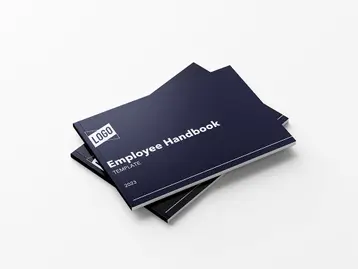
"Protected class" is a legal term set by the Department of Labor that outlines certain groups of people who have specific protection under Equal Employment Opportunity and other laws. Protected classes are set aside based on the person’s immutable characteristics — aspects of their lives or ancestry that are fixed. Every person in every aspect of work is afforded this protection — from application to separation. That includes:
- People who apply for a job
- Those who you choose to interview
- Prospects who you hire or reject
- Salary, benefits, and perks received
- Positive or negative treatment on the job
- Separation
When government agencies, at the federal, state, or local level, assign protection to groups, individuals within those groups receive additional status under the laws that shield them from discrimination in the workplace.
What are the protected classes?
At the federal level, there are 9 main classes protected under the law. Several categories provide additional clarification on who the class includes. The most current, outlined by federal EEOC laws:
- Race
- Color
- Religion
- National origin
- Age (40 and above)
- Sex (This includes all aspects of pregnancy; sexual orientation, and gender identity)
- Veteran status
- Disability
- Genetic information (This includes family history )
States, counties, and even local government agencies may have additional protected classes, depending on where you do business. In some areas, these protections extend to marital status (California, Illinois), unfavorable military discharge, or citizenship status (Illinois). 7 states have specific discrimination prohibitions centered around hairstyle (often called Crown Acts). Assure your organization is protecting the rights of applicants and employees. Therefore, it’s essential you know what is regulated in your area. Check with your state and local Departments of Labor for updates and current legislation.
What is discrimination?
Discrimination is the act of excluding a person or categories of people based on their protected status. Hiring only men, for example, discriminates against women. There are rare instances when hiring only men is acceptable —a men’s locker room attendant, for example. For all other jobs, excluding women because of their gender rather than qualifications is considered discrimination.
Discrimination is the act of excluding a person or categories of people based on their protected status.
Discrimination also works in reverse. Providing better treatment or opportunities for people who are not in a protected class discriminates against those who are. If you typically promote one category of workers, you may be discriminating against another. Discrimination takes many forms. Two specific categories of discrimination are explicit and implicit bias. These create an environment where some groups are provided better treatment than others based on their status.
Explicit bias
Explicit bias is conscious and deliberate. It specifically excludes or includes people or groups of people based on their characteristics and traits. It can go beyond decisions that impact employment directly. Examples include scenarios where you only hire:
- Younger people for computer-based jobs
- Women for customer-care positions
- Men as mechanics
Explicit bias includes how people are treated and the employment conditions they enjoy.
Discrimination laws prohibit any type of adverse impact on protected classes in every phase of employment — starting with your recruitment practices.
A person in a protected class may still be discriminated against even if they earn the same amount and are provided with the same benefits and perks as someone who is not in a protected class. Managers are not the only staff who can perpetuate discrimination. Coworkers can be guilty of discrimination in the workplace. This can include using language that is demeaning, derogatory, or disrespectful. It can consist of bullying, shaming, or excluding people from work or social opportunities based on their status. Whether it’s from management or colleagues, discrimination in the workplace is the business owner’s responsibility. If peers discriminate against coworkers, the company is responsible and liable.
Implicit bias
Implicit bias makes assumptions based on a person’s status and can be less obvious. It can include feeling more comfortable with people who share your own characteristics. Some recruiters skip applications and resumes when the job seeker’s name is difficult to read or pronounce. These are forms of implicit bias:
- Not offering business trips to women because you assume they won’t want to leave their children is a form of implicit bias.
- Speaking differently — more slowly or using one-syllable words — can be another form.
- Assuming someone cannot understand or comprehend based on their status — like not assigning computer work to someone more seasoned, can be implicit bias.
We all have biases: we may be more comfortable ‘hanging with the guys at lunch than having women in our group. In the workplace, biases are illegal. More, they message disrespect for others and the value they bring. It can be challenging to recognize unconscious or implicit biases. Still, diversity and inclusion are critical to a successful, inclusive organization. Making sure you provide equity in all areas of employment is vital.
What is prohibited?
Discrimination laws prohibit any type of adverse impact on protected classes in every phase of employment — starting with your recruitment practices. Applicants must have an equal opportunity to apply based on:
- Where you place job postings
- Who you decide to bring in for an interview
- Which candidate you hire
- What rate of pay and benefits you offer the new hire is offered
Discrimination is prohibited in all employment practices. These include:
- Evaluation
- Promotion/demotion
- Wages
- Transfers
- Disciplinary actions
- Benefits
- Layoffs
- Any other aspect of employment
All the terms and conditions of employment afforded to non-protected classes must be the same as for those who are protected. Business leaders are required to maintain an environment where workers are free from all forms of discrimination, no matter their source. Discrimination can come from management, colleagues, and even customers. For example, a client's derogatory comments subjects your employee to discrimination.
Retaliation
Another form of workplace discrimination is retaliatory conduct or retaliation. If an employee complains about discrimination, either from management, peers, or outsiders, their complaint should be taken seriously and investigated. Before, during, and after the claim, it’s illegal to retaliate against the worker for filing the complaint. This includes management or coworkers:
- Treating them less favorably due to the claim
- Demoting or transferring them
- Firing them
Employees are within their rights to file a complaint of discrimination. The law prohibits retaliation. They have a right to make that complaint.
Addressing a discrimination complaint
If there is a complaint about discrimination in the workplace, it should be addressed immediately. Business leaders must assume any complaint is brought in good faith and investigate under that assumption. Don’t offer excuses or minimize the situation. Take down the employee’s information and investigate as soon as possible. Let the staff member know you’re taking their concerns seriously and will keep them informed of your findings and recommendations.
If an employee comes forward with a complaint, they don’t have to be exacting in their language.
Remember, if an employee comes forward with a complaint, they don’t have to be exacting in their language. Staff members do not have to specifically tell you they feel they’ve been discriminated against. Specific language is not required. If a male employee reports, ‘the women in my group keep saying all men are pigs,’ that’s discrimination on the basis of sex. You should address and correct the situation.
A culture of respect
Research shows a diverse workforce is a more dynamic, profitable environment for business and a more attractive workplace for staff and potential hires. When different types of employees work together in harmony, innovation and productivity are the result. The organization suffers when they work at odds with each other — either as individuals or groups. It’s not only a best practice to keep a discrimination-free workplace. It’s in the best interest of the business. Promote a discrimination-free workplace. Inform employees of their rights and your policy to keep the workplace professional and respectful. Let them know how to lodge a concern or complaint if needed. An open door to all concerns should be the norm. A culture of respect and professionalism is key to a strong organization.
This communication is for informational purposes only; it is not legal, tax or accounting advice; and is not an offer to sell, buy or procure insurance.
This post may contain hyperlinks to websites operated by parties other than TriNet. Such hyperlinks are provided for reference only. TriNet does not control such web sites and is not responsible for their content. Inclusion of such hyperlinks on TriNet.com does not necessarily imply any endorsement of the material on such websites or association with their operators.






